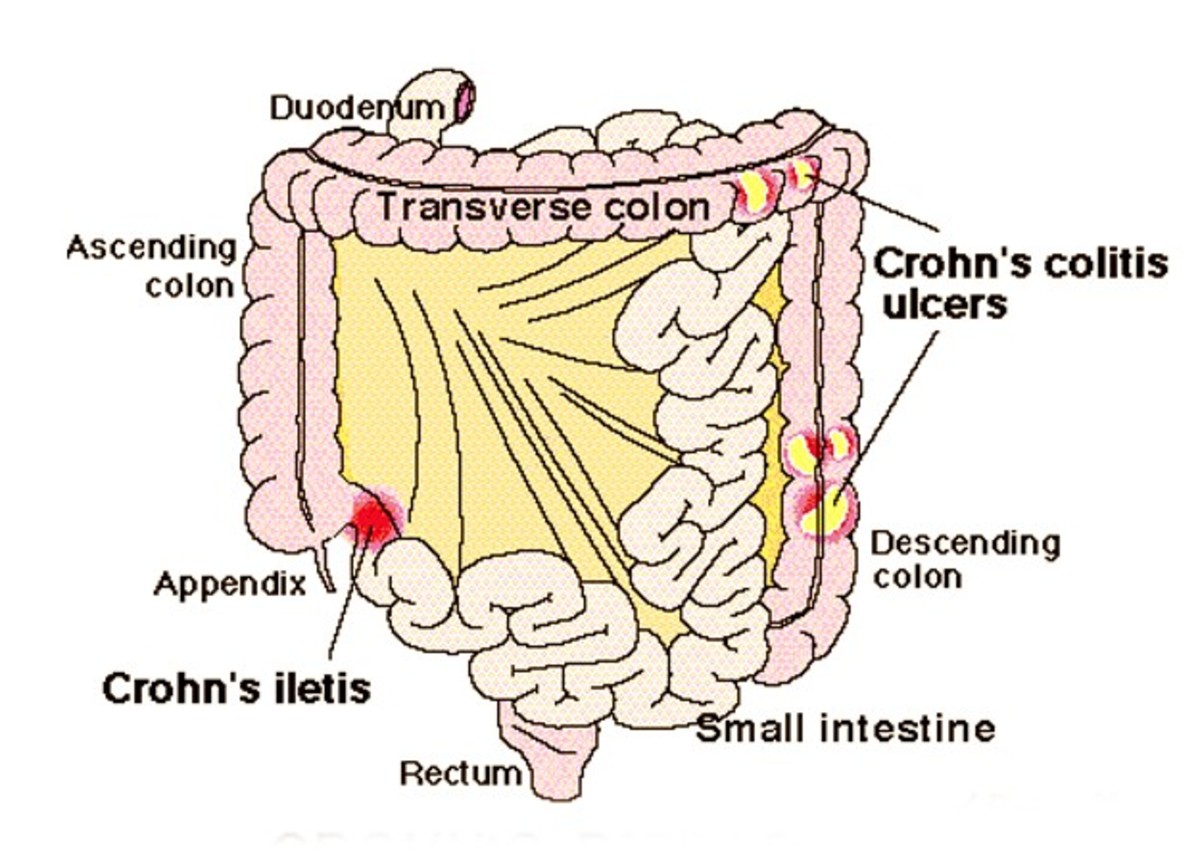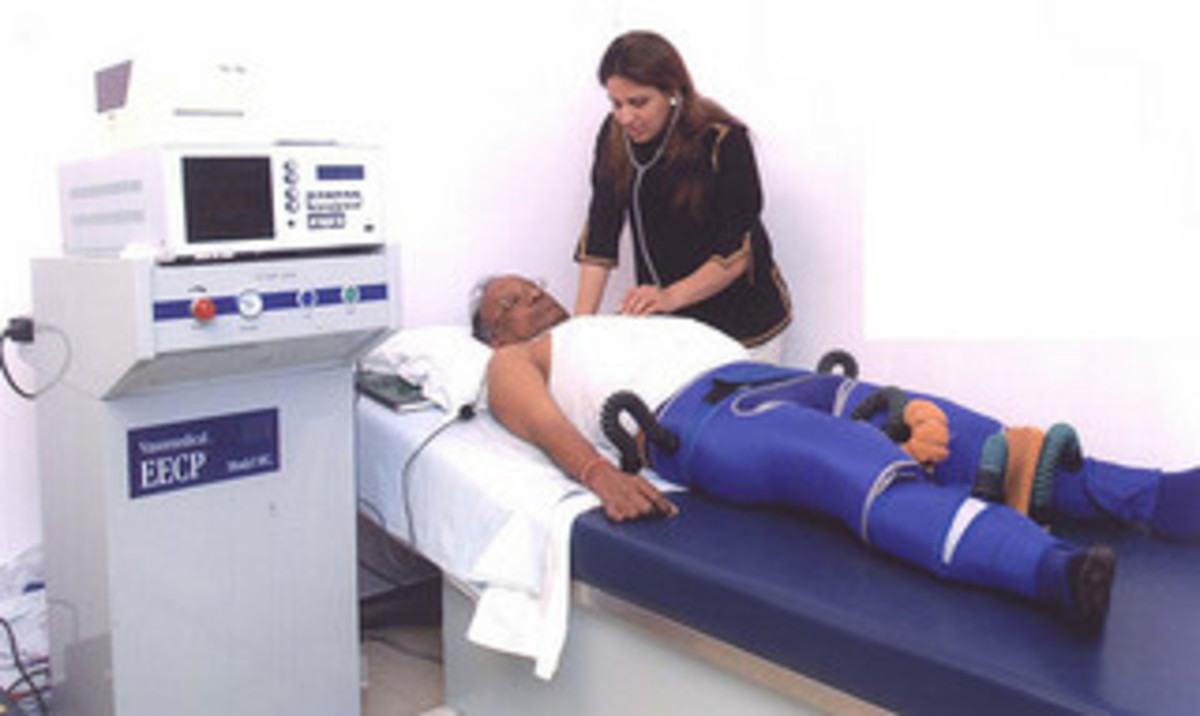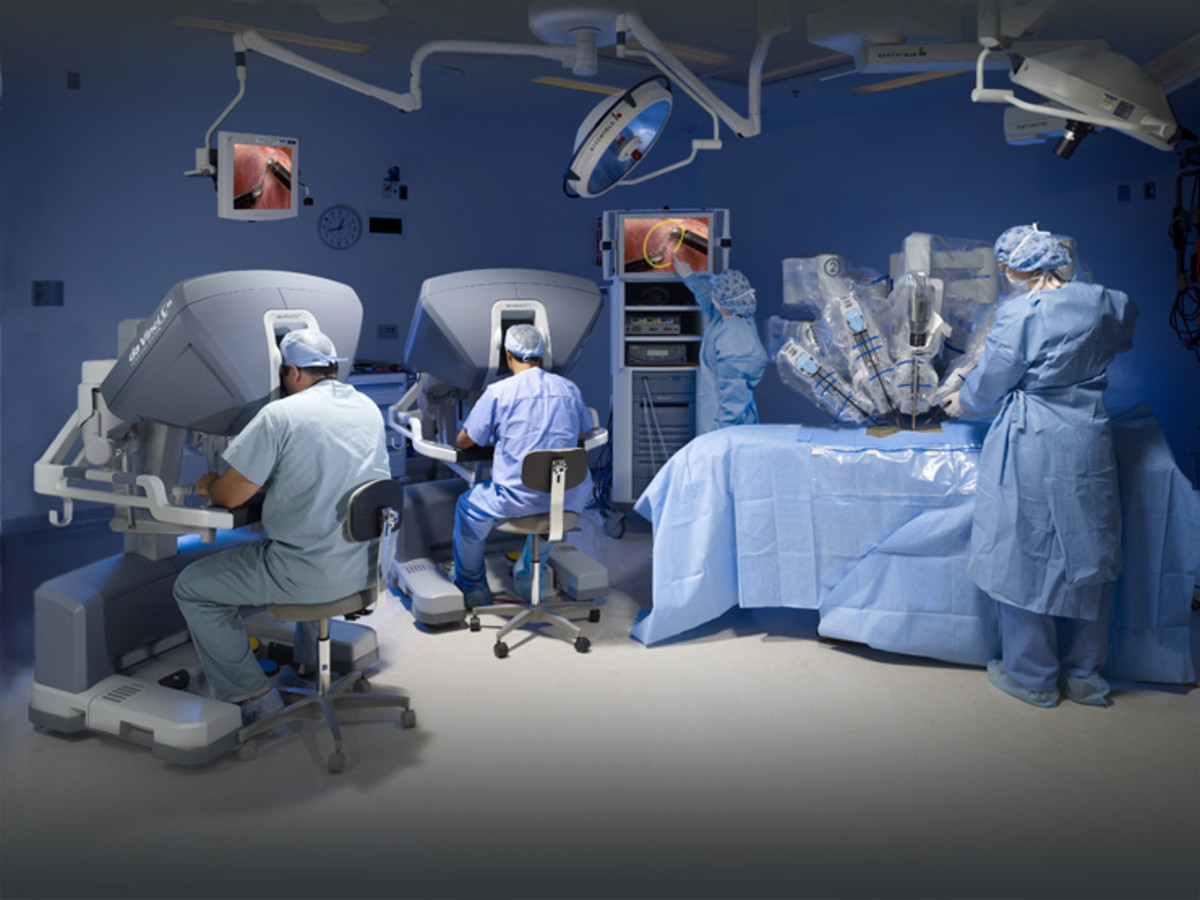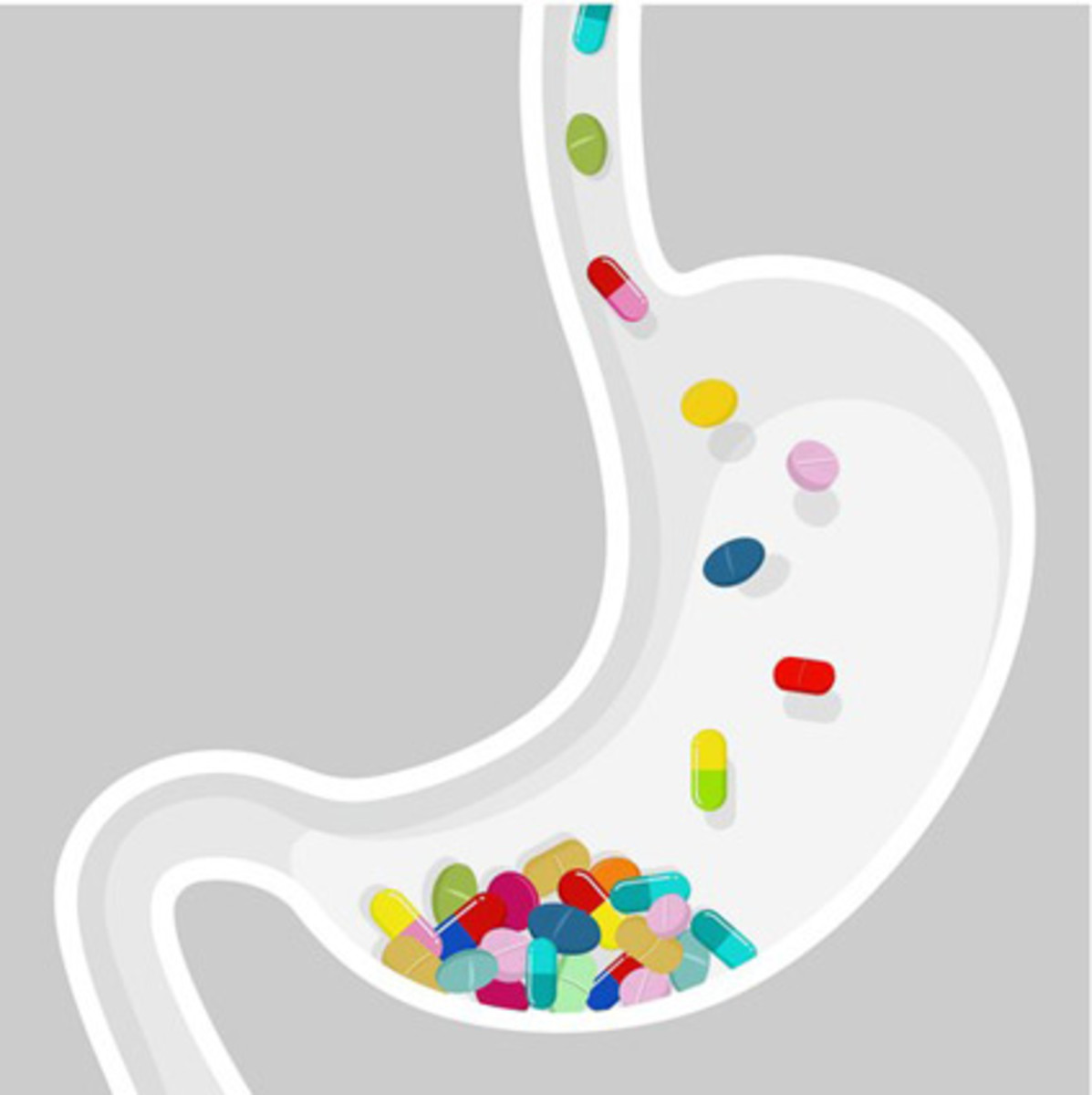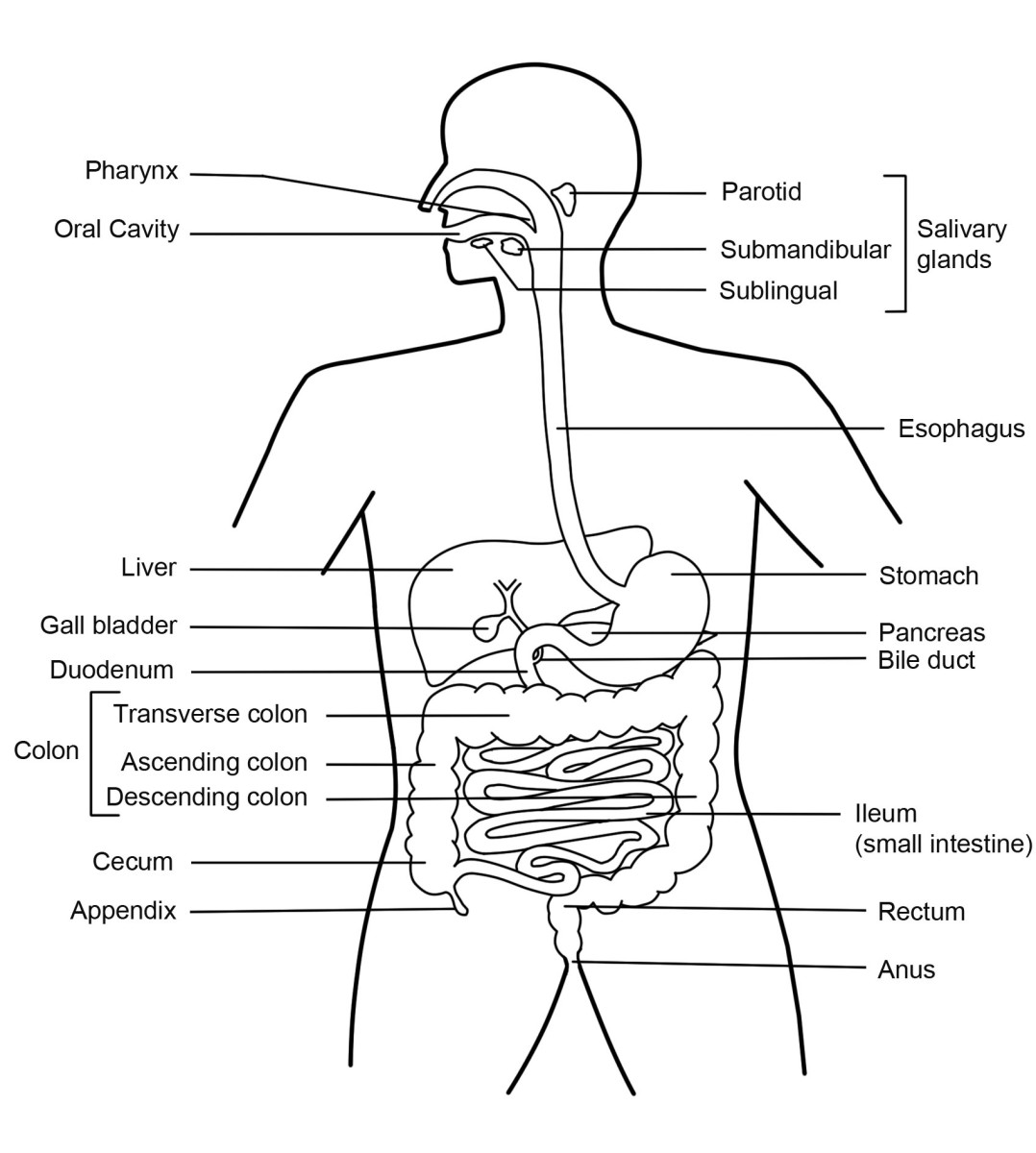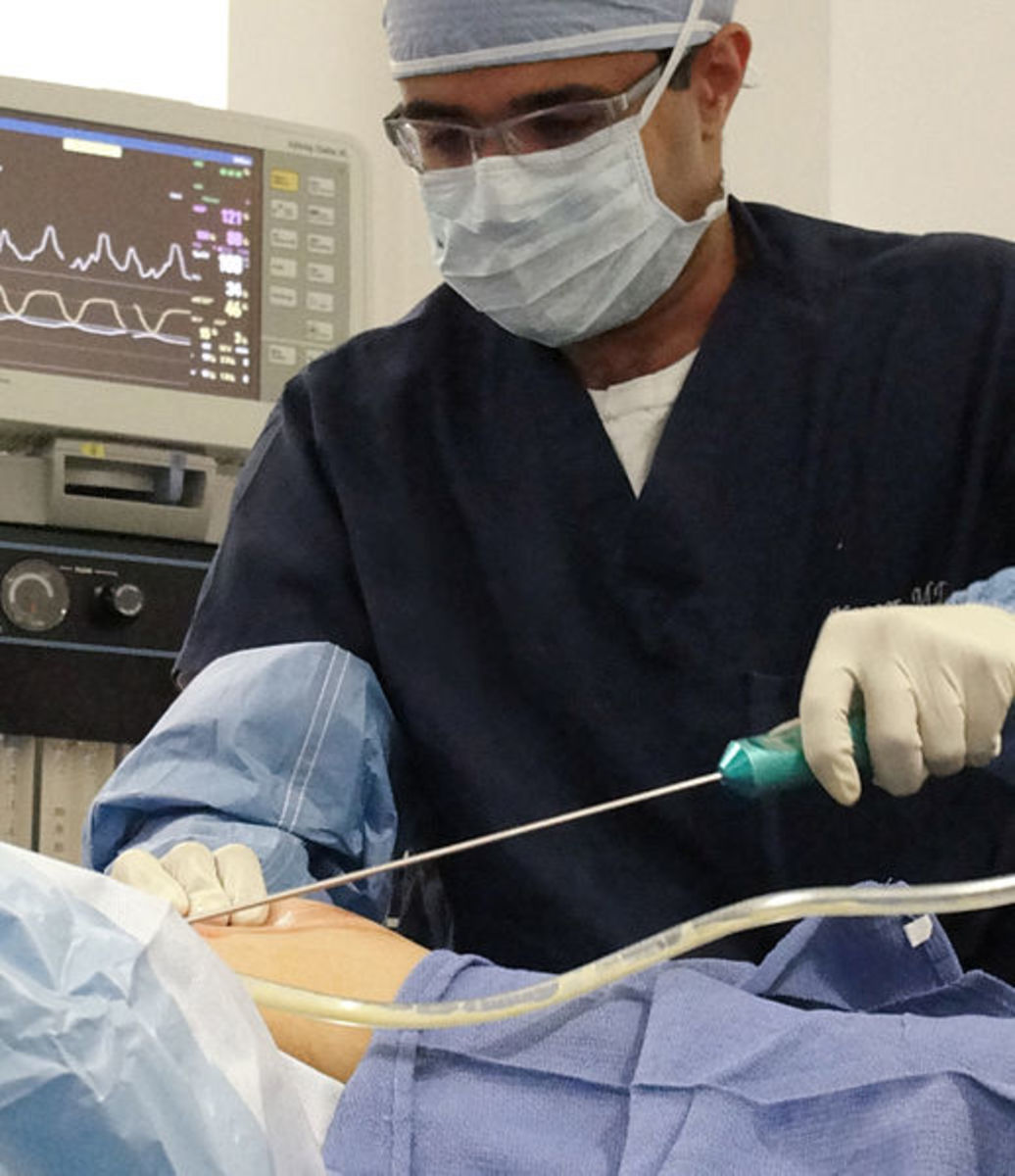- HubPages»
- Health»
- Diet & Weight Loss»
- Weight Loss
Gastric Bypass: The Procedure and Risks
Gastric Bypass
Roux-en-Y, or Gastric bypass surgery, allows a surgeon to create a pouch and bypass part of the small intestine. The pouch only holds one ounce of food. This small pouch restricts how much food you can consume, which decreases calorie intake. Bypassing a portion of your small intestine allows the body to decrease the amount of nutrients it absorbs from the food you do eat. This also leads to weight loss.
The Procedure
This procedure is performed with the patient under general anesthesia. This means that you will be asleep and will feel no pain. There are two steps during gastric bypass surgery:
- Creating the pouch; and
- Bypassing a portion of the small intestine
The first step makes your stomach smaller by creating a pouch. The surgeon uses staples to divide your stomach into two sections: your pouch where food will go, and the larger part of the stomach. Your new pouch will hold about one ounce of food, which helps you feel full faster and consume less calories.
The second step is the bypass, which is where the surgeon bypasses part of the small intestine by connecting another part to a small hole in your new pouch. The food you eat will now travel from the pouch into this new opening in your small intestine. This causes your body to absorb fewer calories.
With laparoscopic surgery:
- The surgeon makes 4 to 6 small incisions in your belly. The laparoscope (a tiny camera) goes through one of these incisions and is connected it to a video monitor in the operating room. The surgeon will look at the monitor to see inside your body while doing surgery. The surgeon will use small surgical tools inserted through the other incisions to complete the procedure.
This surgery (done with a laparoscope) take about 2 to 4 hours. Sometimes complications arise that lead the surgeon to revert to an open surgical procedure. Ask your surgeon why this may be necessary.
Roux-en-Y Stomach Surgery
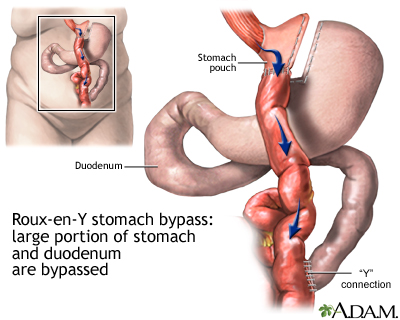
Reasons for Surgical Weight Loss
Usually a doctor or surgeon will not recommend weight-loss surgery unless you cannot lose a large amount of weight and keep it off on your own using lifestyle changes. Doctors will often have patients undergo a medically supervised weight-loss program for three to six months prior to being given a referral to a surgeon. Health insurance companies may also require this prior to authorization for surgery. Make sure you contact your insurance company and verify coverage and requirements for authorization prior to surgery.
Doctors often use the body mass index (BMI) and health conditions to determine medical necessity for surgery. Gastric bypass is not a "quick fix" or an "easy way out" for obesity; it is a tool to assist in weight loss. Diet and exercise must change after surgery. You must also know and understand the risks of surgery, and what your life will be like after the surgery. Most patients will be successful when they follow the guidelines post-operatively. There have been incidents in which patients have regained some or all of their weight after surgery when not following the guidelines and not making lifestyle changes.
Surgery is a tool. While some weight gain (about 20 - 30%) can be expected, without lifestyle and diet changes, you will not be as successful as you could be and you may even experience more weight gain than is typical. If you gain substantial weight or cannot lose weight after surgery, talk to your surgeon about other options, such as the duodenal switch procedure.
What do you think?
Are you considering weight loss surgery?
Risks
All surgical procedures have inherent risks. Gastric bypass is a major surgery and has many risks. Some of them are very serious. You need to discuss these with your surgeon and make sure to ask him/her what his/her rate of complications are for their practice.
- Blood clots in the legs that may travel to lungs.
- Blood loss.
- Pouch leakage
- Infection, including in the incisions, lungs, bladder, or kidneys.
- Death
It is important to keep in mind the following statistics when considering risks:
- Bleeding complications occur in fewer than 4% of patients who undergo gastric bypass
- Pouch leakage occurs in ranges of 0% to 4.4%
- Wound infections occurs in about 2.9%
- Blood clots occur in less ranges of 0% to 1.3%
- The observed mortality rate for gastric bypass in less then 6%
Doctors and surgeons take many precautions prior to, during, and after surgery, such as medical testing, evaluations, pre-surgical weight loss, and more. Talk to your doctor about all of the risks associated with gastric bypass and what they do to ensure the risk to you is low.
Animated Roux-en-Y Procedure Video
After Surgery
Most people stay in the hospital for 3 to 5 days after surgery. In the hospital, your surgeon will check many things and you will be asked to do many things to help with your healing:
- You will be asked to walk a little on the same day you had your surgery. Walking helps assist in healing and speeding up "sluggish" bowels.
- You may have a catheter in your bladder to remove urine. This is usually removed when you start walking and feel comfortable getting up (with or without assistance) to use the restroom.
- You may have a tube connected to the larger part of your stomach that was bypassed. This will usually be locate in your side and will drain fluids. This is referred to as "the drain." This helps keep your stomach, which is probably tender and raw, from experiencing any further issues.
- You will wear special stockings on your legs that will help prevent blood clots from forming. Your surgeon will probably put these on you prior to surgery. They are hooked to a machine that pushes air in and out to keep the blood from pooling in your legs while you are stationary during and after the procedure. You may also receive medication to prevent blood clots.
- You will receive pain medication, either pills, through an IV, or through a catheter that goes into a vein. Sometimes you may have a patient controlled IV, which means you control your pain medication up to the maximum allowable dose during a given time period. This helps control your pain.
Your surgeon will check your pouch for leaks and you will be asked to walk the same day of your surgery. Walking, though painful, will help speed up the healing process as well as help you pass gas and have a bowel movement after surgery.
You will be able to go home when:
- You can eat liquid or pureed food without vomiting. The surgeon probably will have you start with ice chips after they check your pouch for leaks.
- You can move around without a lot of pain. If you are in severe pain or your pain level does not decrease, your surgeon will need to evaluate you before you leave and monitor you for infection.
- You do not need pain medication through an IV or given by shot. If your pain has decreased or is manageable without the use of an IV or shots, your surgeon will allow you to take pain medication by mouth.
Most people lose about 10 to 20 pounds a month after surgery. Sometimes people lose more or less than this depending on their starting weight and lifestyle changes after surgery. Your weight loss will decrease over time, but stick to your diet and exercise changes for success.
Medical conditions related to obesity may improve or disappear after surgery, such as sleep apnea, high blood pressure, type 2 diabetes, acid reflux, and high cholesterol. You will see other improvements as you lose weight, such as decreased joint pain, more energy, and increased ability to complete tasks you were previously unable to. Some people have seen their type 2 diabetes disappear the day after surgery.
Make sure you follow all the guidelines your doctor has given you and attend all follow-up visits with your surgeon. Notify your primary care physician of your surgery because certain things will be different for you, such as the use of blind NG tubes or certain types of medications you are allowed to take.

